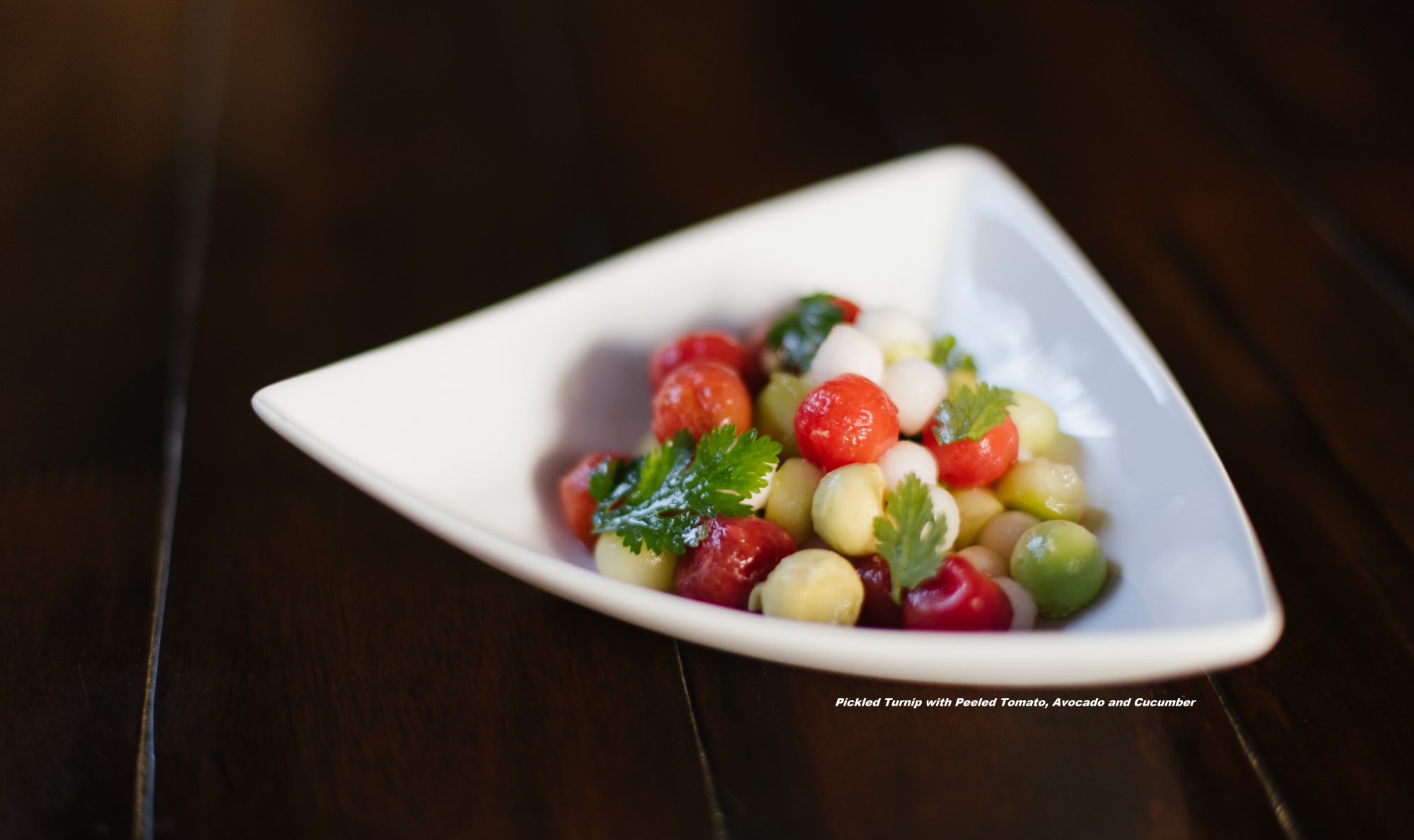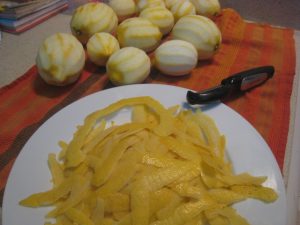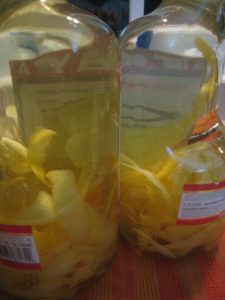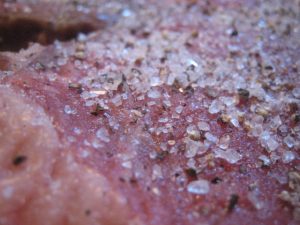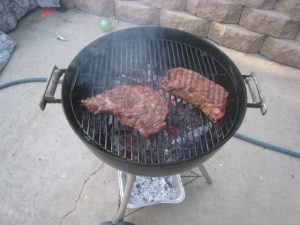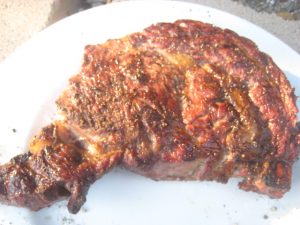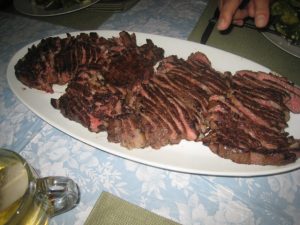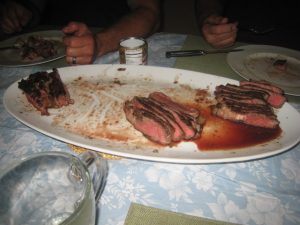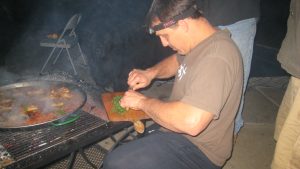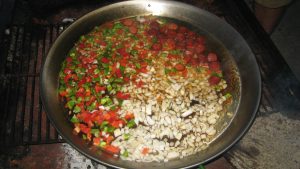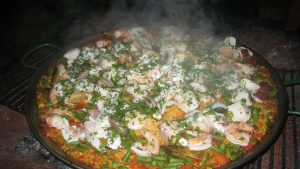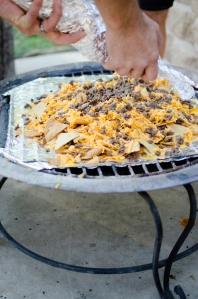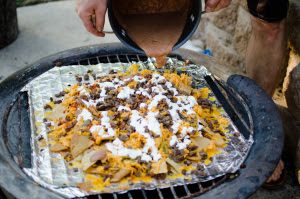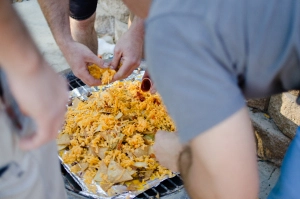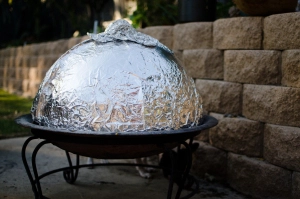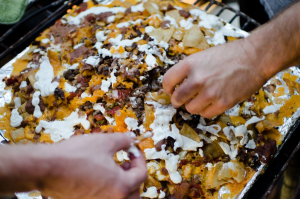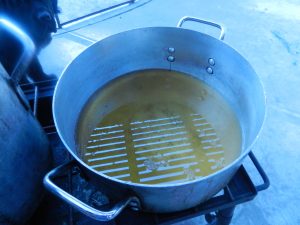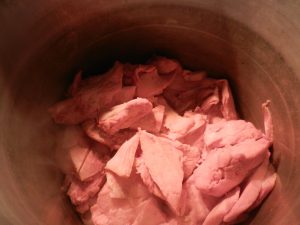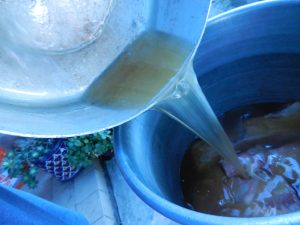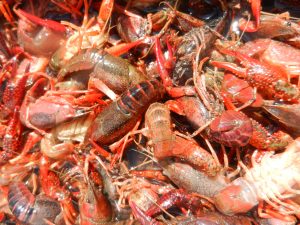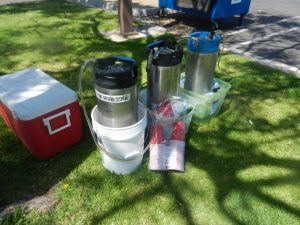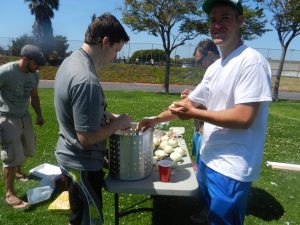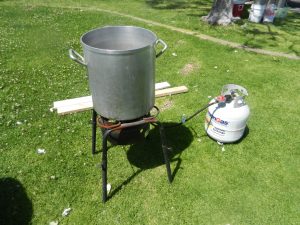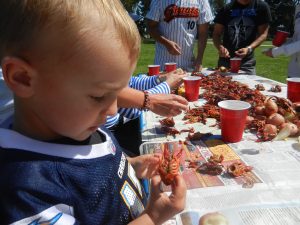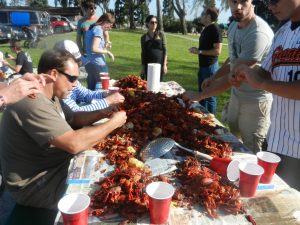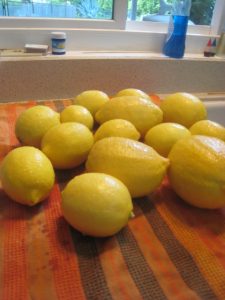 We thought it’d be fun to make limoncello, like the kind my mom brought back from Italy. But we don’t love our liquor sugary, so we went with a simple answer…lemon vodka.
We thought it’d be fun to make limoncello, like the kind my mom brought back from Italy. But we don’t love our liquor sugary, so we went with a simple answer…lemon vodka.
Sangria Is Refreshing
Sangria is dangerous…sneaky.
Tastes like juice but is mostly wine with a bit of brandy. I personally love sneaky drinks. I don’t always love to drink them (usually too sweet), but I love serving them. People who are not as likely to imbibe are much more apt to have a glass of fruit ladened Sangria then a cocktail or beer. This means your buzz to guest ratio increases, which means more smiles and laughter. Which is the point of most gatherings, am I right?
Origin
Spanish in origin and translated to “The Color of Blood”, its typical components are red wine, fruit, and brandy; with many recipes adding fruit juice, soda or soda water. However, white wine can also be used as the base and results are just as refreshing and delicious; with a lighter, brighter, summerier feel. Yes summerier…I looked it up.
A couple months ago while teaching a cooking class a nice young lady forwarded me this white Sangria recipe. I still haven’t made it but a friend of mine did, and luckily she gave us a bunch. We drank the crap out of it and fought over the last glass…I won. It was summer in a glass and didn’t get old. I even added some of my lemon vodka, to give it…more.
Recipe
Serves 1-8-
4 bottles of white wine 1 C of sugar 4 stalks of lemongrass 3 oz of ginger 10 each kaffir lime leaves (if you can’t find these, just use lime peel) 2 pineapples (cut off the skin) 2 cara cara oranges cut in half (you can use regular oranges if you can’t locate these) 2 sticks of cinnamon 10 each cloves
Pour the wine in a large container that will fit in your refrigerator. Whisk in the sugar and place all of the aromatics in the container as well. Slice the ginger lengthwise and pound the lemongrass in order to release the natural oils. Let sit in the refrigerator for 2 days, strain off the aromatics, serve over ice with a splash of 7up. Recipe Courtesy of Chef Jonathan Bautista
The earthy flavors of clove and cinnamon add a softness to the crisp Asian quality of the orange, lemongrass, and ginger. If you can’t find the lime leaves at your local Asian grocer, use lime peel. We just went to a 30th birthday where there was a ginormous bowl of tasty sangria keepin’ tha ladiez happy. Although I was experimenting with every other drink that night, I did get to taste the Sangria. It was great. The only difference is it wasn’t really Sangria. Or was it?
Big Kahuna and Sierra mist at a 2 to 1 ratio was all that was needed to please the crowd. Sure there was some fruit mixed in, but that was just for show. For the un-initiated, Big Kahuna is Fresh and Easy’s Charles Shaw, and Sierra mist is their Sprite. So, it’s up to you. You can create smiles with Sprite and cheap wine, or go all out with a bunch of ingredients. Just put it over ice and turn the music up.
Now get off the computer and go get your summer drank on.
Steak Is Good
Whether you eat it or don’t, steak is good. If you don’t eat it…there’s no way that it’s because of the taste.
To those that think cooking a juicy, flavorful, well-seasoned, highly delicious piece of meat easy…you’re right.
Time and again I get asked; “what do you put on your steak?” The answer is always the same…kosher salt and coarse ground pepper. That doesn’t mean that other seasonings are bad or that you can’t use sea salt. Salt and pepper are maximize flavor without muddling the flavor of the meat.
I don’t cook a steak at home often enough to need added interest from spice rubs and marinades. I just want all my taste buds focused on the gloriousness that is high quality beef fat.
Since fat is what turns on the drool faucet, the most flavorful cuts are ribeye (when price is no option), and skirt. Skirt has so much marbling that when cooked to well done, it’s still moist and Mcfatty delicious.
This chef is of the opinion that most rare steaks are not Scottish. With love of fat being the focus, I need the fat to heat and render through the steak, which takes more time then rare will usually allow.
First, some basic guidelines:
- Heavily marbled steaks or steaks where fat is coveted, should be cooked to the medium side of medium rare or the rare side of medium, (as explained earlier).
- If you are cooking a lean steak like flank, top round, filet and flat iron; ensure that it’s not cooked past medium.
- Cooking surface should be hot. Hotter then most of you might be used to, or comfortable with.
- Dense and/or heavy cooking surfaces are best.
- Seasoning ahead of time, is either a couple hours ahead or right before.
- Cooking steak is better if one hand is occupied by a glass of wine or a good beer.
- Cooking indoors needs a decent vent hood or a stoned fire alarm.
- Flipping a steak prematurely is immature
- Flipping and rotating are not the same thing
- Gray is not the same as browned, and cooked is not the same as browned
- Browned means caramelized, caramelized means ohm, nom, nom.
- Gray = steamed. Steamed steak = :-(
- If major flare ups occur, a spray bottle is nice to have on hand…in a pinch (serious emergency), you can thumb spray a shaken beer.
There are two convenient preparations for cooking steak. Using an outdoor grill and using a sauté pan. The pan method is faster and easier, but dirtier and void of charcoal or fire “flavor”.
GRILL
For charcoal it’s really nice to have a chimney starter, Kingsford Original or Competition briquettes and “Weber paraffin wax fire starters” which can be found at Home Depot. Notice the specificity on the charcoal and the fire starters. Kingsford cooks and starts more evenly, while the wax starters make lighting absolutely stupid simple. Sure, you can use rolled up newspaper; but you usually need to do it twice and it creates a lot of unneeded ash.
For a charcoal chimney. Add charcoal to chimney, place and light a starter underneath. In about 15 minutes the billowing smoke will have dissipated, and fire will be seen out the top of the chimney. Pour charcoal into grill, spread them out and cover with the grill grate to heat up. Once the grate is on, you’re at the same point as 7-10 minutes into preheating a gas grill.
Once the grill grates are hot, brush with a wire brush, then oil the grates, brush again and oil again. The second time is to ensure a clean, oiled surface if you started with a gnarled grate. I use spay oil but if I’m out, I’ll oil a paper towel.
Blot the steaks with a paper towel to remove excess moisture, then season liberally with pepper and salt. Salt so heavily that you’re questioning, and remembering, your last blood pressure reading. Alot of the salt gets lost in the process, and animal fat loves salt. So, hook it up. Also, lightly oiling a steak before seasoning is necessary for lean cuts but not advised for fatty ones.
Finally
Place your seasoned steak on the hot grill surface. Cooking on the grill is fun and sometimes exciting, but like anything else, benefits from practice and familiarity. Remember to use your eyes and nose; your goal is to only think about one side of the steak at a time.
If your insufficient heat and sticking meat are telling you not to turn yet. Don’t touch it. Leave it alone and don’t “play” with it, (which cools down the grates and the steak). If you have good heat, the actual cooking process takes about 10 minutes.
The importance of high heat is so your steak browns before it cooks. Meat is wet and dense. If you don’t get a good early sear or crust on the steak, it will likely bleed out its moisture, then steam and seize. Seized, overcooked, gray meat ensures no friends coming over for future BBQ’s.
So, your steak is on the grill. It shouldn’t stick, if it is sticking, it’s not ready to touch and/or your surface is not hot enough…another reason a hot surface is required.
Once the steak is easily lifted from the grill, feel free to rotate it two or three times over the next several minutes to achieve more even browning on the surface. After the steak looks browned and awesome, flip it.
At this point, flare ups can really start occurring, so have a spray bottle at the ready.
Continue cooking for 3/4 time or equal time as the first side. Aways less with thinner cuts. Checking for doneness is something you’ll have to learn, there are a few variables to think about. Thickness, temperature of raw steak, temperature of fire, density of cooking surface, manipulation during cooking, weather, blah blah blah. Or buy a good thermometer.
Rest it
Resting IS important and should not be overlooked. Place the steak on a plate (hot side up) and either lightly tent with foil or place in a warm area; I put mine in the microwave. Resting allows the hot moisture to settle down and find a home. Cutting too early lets the hot running moisture escape.
PAN
When using a sauté pan you need something heavy that can retain heat, not warp under extreme heat and have an oven proof handle.
I use cast iron, but most tri-ply pans will work. Just beware that grease spatter can be hard to clean on a nice pan.
Heat oven to 500 degrees and place your pan on high heat. Blot the steak dry of any excess moisture and season liberally with salt and pepper. Turn on your vent hood and wait for your pan to get raging hot. A little water flicked into the pan should show beads of water dancing around and not evaporating very quickly. The pan should be hot enough that the water beads are hovering, not rolling. After the water is gone, swirl a tablespoon of oil into the pan and add your steaks, only one or two.
Now don’t touch ’em. Let the steaks cook until a clear and distinct crust is achieved. Your allowed to peek so you can gauge the crusts development. Once it looks evenly browned and delicious, flip and throw the whole pan in the oven. Cook for another 5-10 minutes depending on your thickness, then remove from the oven and place on a plate with the side that was on the pan, now facing up.
Slicing
Always cut against the grain. More important for some cuts then others but pay attention to the direction of the muscle fibers. Very easy to see on a flank steak, the idea is to shorten those long strands. If you see the fibers running up and down, cut side to side. If the fibers are running side to side, cut up or down. And remember that thin is always better and a sharp knife makes thin easy.
One last thing. I like to slice my guests steak for them for a few reasons. I can cut it thinner and more efficiently on a cutting board with a big knife. Also, I can toss the slices in any accumulated juices and, I don’t like people to fumble around their plate improperly cutting their meat.
Pics
Paella Is Good
Hey! Chef Joshua here with your daily news flash! Paella is good.
Multi-sensory
Paella is and can be alot of things, but much of it has nothing to do with how good it tastes. The communality it demands between guests provides this surrendering force that relaxes everyone, and excites them at the same time.
I don’t mean to be so dramatic about it but with most great and memorable gatherings there is always a certain je ne say quoi.
Cooking a whole pig or goat can have a similar feeling; or a labor party when all your friends come over for a big yard project and afterwards you party into the night and revel in your accomplishment. Effort I think is the key here, (I know I’ve gone down this path before).
Paella has this kind of magic; where everyone gets to tangibly feel a part of an effort and a transformation.
Gettin’ it all together
There are three things involved that make a paella party fun and cool. One is the pan, called a paellera; it’s what gives paella it’s name, which is a Spanish root word for pan. Now I’ve made great paella on the stove top many times without this special pan, but if you want to have the experience I’m talking about, you’ve gotta get one.
Next is an outdoor fire. Both words are important; outdoor, and fire. Gatherings outdoors are great, but if everyone is communed around a fire pit, then the intrigue and anticipation for the dinner rises even higher.
Last is not the ingredients like you might think; but the common thread of all relaxing, fun social gatherings…booze. I know, I know; I beat this horse to death sometimes, but it’s true! Add a couple drinks to room full of silent people and BOOM! Conversation. As an added bonus–the combination of an outdoor fire and booze gets you a nice little peanut gallery that helps out with labor, un-needed tips and critiques.
Piled on top of all that, we’re finally to the pièce de résistance. The ingredients are not the “third reason” because we are not in Spain and therefore have no traditional binding that limits us to which ingredients we use. If anyone ever tells you your paella is not authentic because you didn’t have (insert unattainable ingredient here), tell them you canceled the party and there’s no reason to come over on Saturday.
Rice, saffron, a few veggies and meat are all you really need. I like the complexity of using Spanish chorizo, chicken thighs and seafood. Chorizo is spicy, earthy and full of wonderful fat and flavor, although probably the hardest ingredient to find. If you can’t find the cured Spanish variety, don’t substitute with the soft Mexican chorizo. Good butcher shops will usually carry it and I know Whole foods has it. I like chicken for the fatty skin and it’s always my first step–browning and rendering the chicken skin provides your cooking fat for the rest of the dish. Rabbit, and duck can also be used but it’s up to you.
After I remove the chicken I add the chorizo and veggies (sofrito). Traditionally the sofrito cooks up to a paste but I tend stop before the veg looses it’s shape. Next is the rice–once again, tradition states not to use long grain rice, but if that’s what you decide to go with, no one will be the wiser unless they “know” paella. I always use a medium or short grain rice, usually arborio. It’s readily available at all supermarkets and has the physical make up we need.
Arborio and other short grain rices have an outer layer that melts its starch. That starch (which so famously gives risotto its creaminess) is what helps form the socarrat.
The socarrat is the beautiful crust that forms on the bottom, adding textural variance and supreme richness. When the rice toasts on the bottom of the pan the moisture inside the rice is replaced with the fats and spices– then fries crisp. Ohm nom nom.
A Recipe
1tsp saffron threads, dried or lightly toasted
7-8c water
2T olive oil
2lb chicken thighs with bone and skin
kosher salt and fresh pepper
2c sliced or diced Spanish chorizo
2c finely diced onions
1c finely diced bell peppers
1c diced tomato
3c arborio rice
2-3lb assorted seafood
1c blanched peas or green beans
3T minced parsley
1tsp minced lemon zest
Heat the water and saffron in a pot to steep; set aside.
Prepare your fire and set the pan.
Once hot; season the chicken, swirl in the oil and place the chicken skin side down. Render the skin until browned and crisp, then flip. Move the chicken to the edge of the pan and add the chorizo and veggies. Stir and sauté until soft or mushy. Add the rice and sauté a bit to toast. Add the saffron water with a couple teaspoons of salt. Nestle the chicken into the rice and adjust the fire so it’s not at a raging boil.
Cook for 10 minutes and start layering on the seafood with the slowest cooking fish on the bottom. Cook another 5 minutes and flip any fish on the top that isn’t getting hit with heat. If your rice is starting to finish but the fish still needs a little time, lightly tent with foil or parchment to help steam. When everything looks cooked, wait for a crackling sound on the bottom which means the rice is frying. Garnish with peas, parsley and lemon zest.
Mount Kilimanacho
Mount Kilimanacho is the most badass nacho mountain I’ve ever had. Maybe better than the first time I did it in 2004.
Photos courtesy of Chrystal Cienfuegos
If you didn’t know, I love football. I love sports in general, but football is all I have time for anymore. Although my team will likely never win it all, my friends and family create great memories every season rooting for our perennial losers. With football having a much shorter schedule than other sports, it allows fans to continually make “an event” out of most Sundays that would otherwise be delegated to housework.
Like most football fans, our fall and winter Sundays revolve around food and drinks. Sometimes the food is easy and sometimes it’s a lot of work, but it’s always delicious and usually centers around a grill. This year’s Superbowl party was no exception.
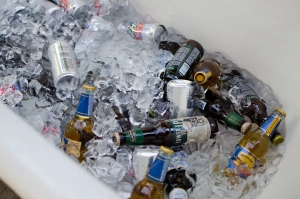 Since I didn’t do much cooking during the regular season we tried to go all out this year and get everyone involved. And everyone DID get involved, it was beautiful. We weren’t rewriting the book on anything, but when you attempt to do things properly and there’s a bunch of hungry people, there’s just a lot to do.
Since I didn’t do much cooking during the regular season we tried to go all out this year and get everyone involved. And everyone DID get involved, it was beautiful. We weren’t rewriting the book on anything, but when you attempt to do things properly and there’s a bunch of hungry people, there’s just a lot to do.
We had fried chicken bites with dipping sauces and grilled carne asada nachos. Fried chicken is fried chicken, no real need to discuss that one, other than stating how ridiculous perfect fried chicken is. Ohm nom nom.
Back to Mnt. Nacho
What pictures cannot show is the depth of flavor achieved from the charcoal. The BBQ smoke flavor permeates, and the bottom gets all cheese fried crusty. We of course fried our own chips, grilled the meat, made the beans and made the salsa. The second batch was going to have some nacho cheese swirled in, but we never got there. I think this was all done during halftime. How we pulled ourselves away from another mind-blowing Super Bowl halftime show…I’ll never know :-|

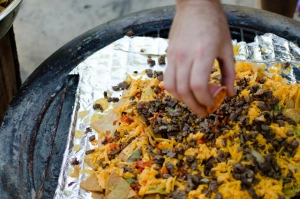

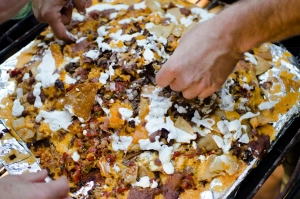
Chrystal is a Local photographer and does an amazing job for any event. http://chrystalcienfuegos.com — I highly recommend her boudoir shots for any woman wanting to give their husbands whiplash. My wife took some and I’m still cleaning drool off the keyboard.
Beef Carnitas
Not suet…which is clean, easy melting fat that’s obtained from just outside the kidney of a bovine. But beef fat trimmings. Not only is rendering fat kinda cool, but it’s a deeper flavor that reaches juuuust outside our norm. Easily obtained from a serious butcher shop, suet and fat is inexpensive, easy to render and gives you a clean, savory cooking oil. On new years eve I set out to make traditional carnitas. Slow cooking pork butt in pork fat until tender, then raising the temp to fry and crisp. Cooking meat in its own fat compounds the flavor and rings in that authentic bell. Unfortunate to those classic carnitas plans, my sister in law was coming over and like always, I forgot she doesn’t dig on the swine. So I switched it up a bit and decided to try beef carnitas instead.
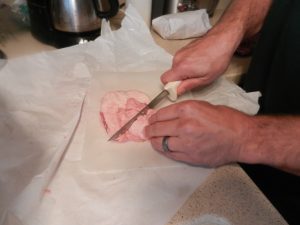 Getting The fat
Getting The fat
Went to the local butcher and asked ’em about getting some suet. They didn’t have it and I didn’t want to drive across town to get it, so I asked them if they had any fat trimmings. They didn’t right then, but would later in the afternoon. Cool. I went back later and got 10 pounds, came home and chopped it up into fist size chunks. Beef carnitas, here we come.
All it takes to render fat is a heavy bottom pan and a heat source on low. It took about 3 hours to render and I didn’t really do it to perfection. Towards the end my impatience got the best of me and I got it a little hot. It didn’t damage the oil to detriment, but it took away the clean purity of perfectly melted fat. I put it through a strainer to remove the fried pieces of crispy fat and any particulate matter. In went the lime soaked beef to a long slow bubble, bubble, bubble.
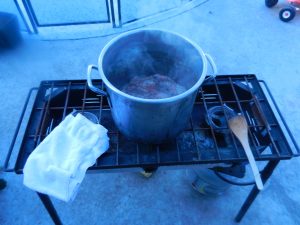 Chewing The Fat
Chewing The Fat
Towards the end of cooking and several cape cods later, I over-cooked the beef a bit. The result was extremely delicious buuuuuut, a bit chewy. Not to jerky standards but still jaw wearing. You’d think I’d have learned my lesson at the family reunion, (referenced in my engagement story). Oh well.
Earlier that day when I got the fat, I realized I was gonna have a fry station ready to rock for midnight munchies, so i picked up some yukon gold potatoes and flour tortillas. Around 11pm I fried the potatoes and they were salty and luscious…and needed at that point. But what came next was an experience no one saw coming, and no one will forget. Well…it was NYE, so a couple people might forget.
Mud Bug Chug
2012 Mud Bug Chug quote at every 30 minute mark. “Did you suck the head? Did you get any juice when you sucked it? Huh huh huh.” Yep, it was that kind of day, and it was perfect.
You might be asking. What is a mud bug chug? Apparently, it’s a crawfish boil. I’ve got a buddy named Doug. Doug, (who is on loan from Louisiana), just threw his 2nd Annual: San Diego Mud Bug Chug. Although the party followed the needed party norms. Good food, good drinks and good people. The food was a first for me, and epically fun. The drinks were illegally good, and the people were all lucky.
Hoppy SD
As hop heavy beers gain in popularity, it still isn’t the standard for American beer drinkers. San Diego has seen heavy growth in the craft beer world. In the meantime, the city has made a name for itself. Synonymous with quality, craftsmanship and originality, it’s climb has been steady and consistent. Hop heavy brews have become the distinct calling card in craft beer. “San Diego style Pale Ale” has become an actual term used to reference double IPA’s. This movement toward full-bodied flavor has made many casual beer enthusiasts accepting of bitter, complex brews.
To reiterate
A crawfish boil with 3 outstanding home brews is a culinary delight. All 3 flavors gave their own story to the day. The first beer was hi flagship IPA, coined Matrimony Ale. Originally created as a wedding beer for a friend. Matrimony Ale is classic, balanced, refreshing, and smooth. The other two beers had specific flavors geared toward the boil. They were a spiced ale and a smoked lager.
Gochugaru was the secret spice in the chile beer. Gochugaru is a distinct Korean chile pepper which gave a perfect amount of heat on the back-end. When I say back end, I mean on the finish, lol. The other brew was a smoked lager that tasted exactly like it was intended. Nice and smooth, with a bite of smoke that begged for a bug.
Pairing
To the unfamiliar, a food and alcohol pairing is deemed successful when both the food and drink are elevated. The intermingling unlocks hidden flavors, or, pulls known flavors to the forefront.
It was a classic San Diego summer day. Happy, people gettin’ down and dirty on a table of authentic American cuisine. Also, the communal savagery of ripping bugs apart for sustenance, is beautiful.
I get fired up when I know someone took the time to prepare something artisanal. Something with passion that can’t procured. The effort lets your guests know that you care about quality and happiness. Here’s some pics until next year, woot woot!
